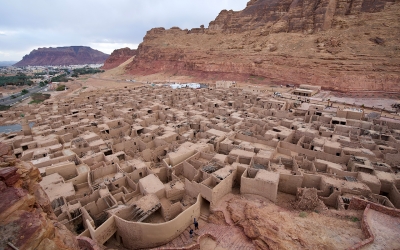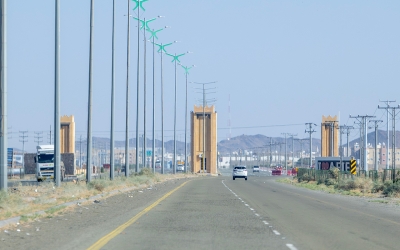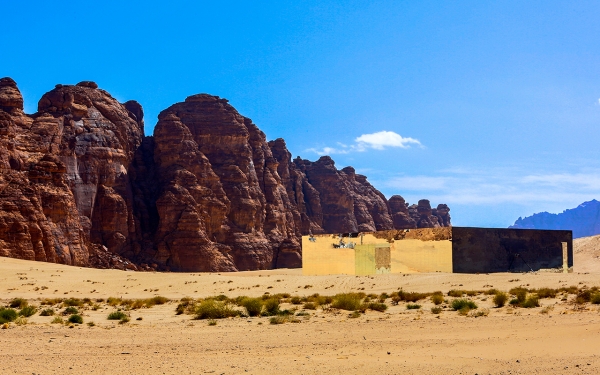
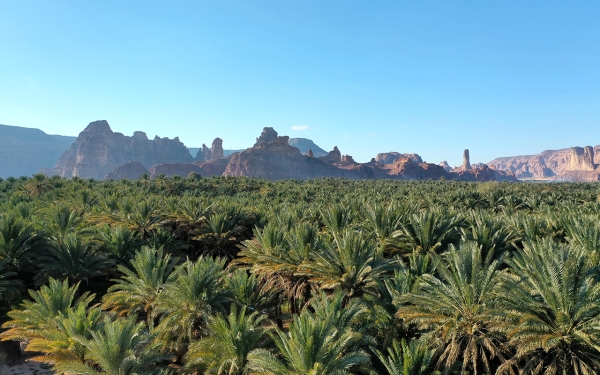
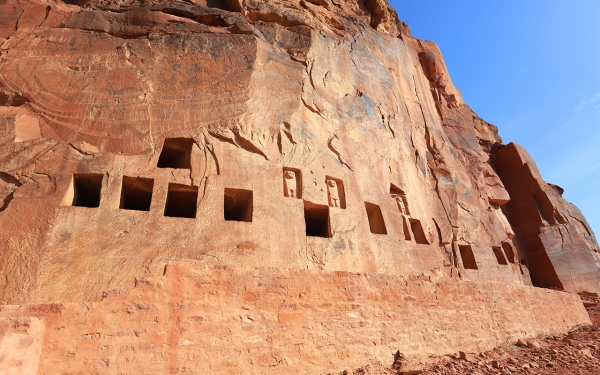
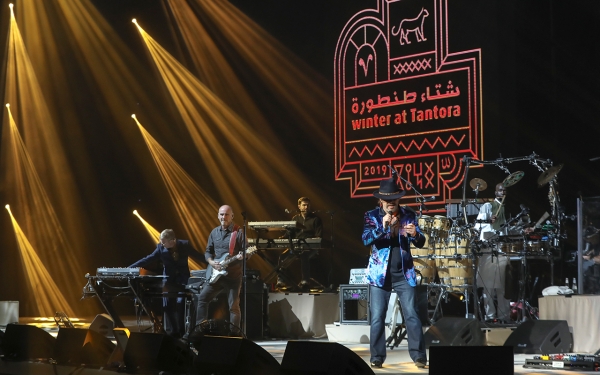
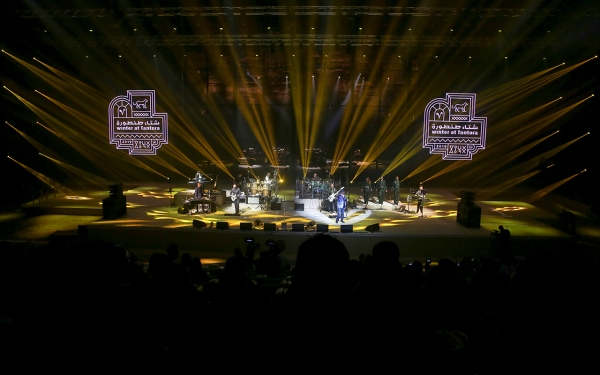
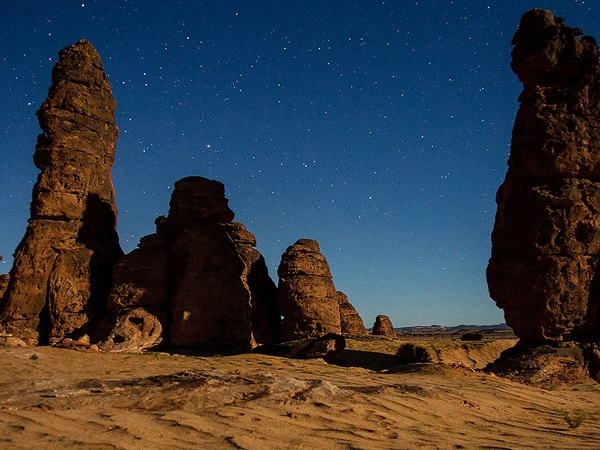
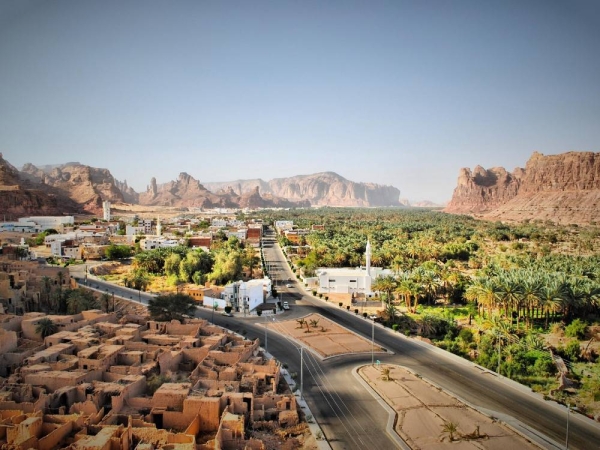
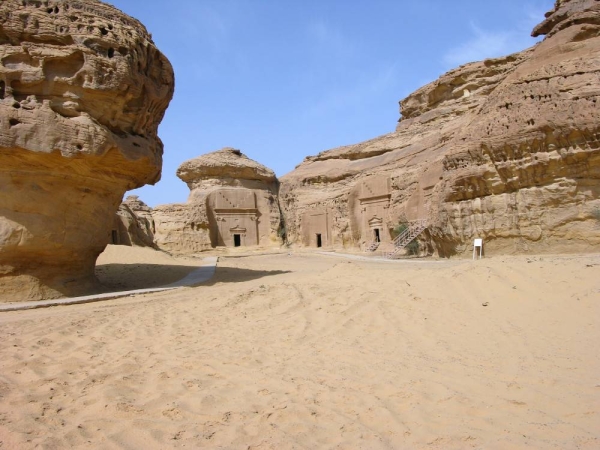
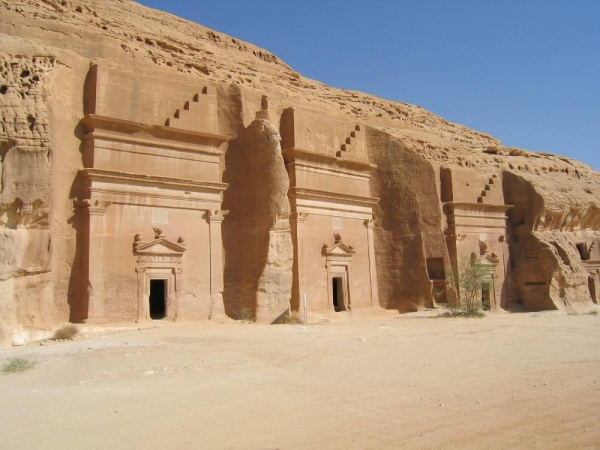
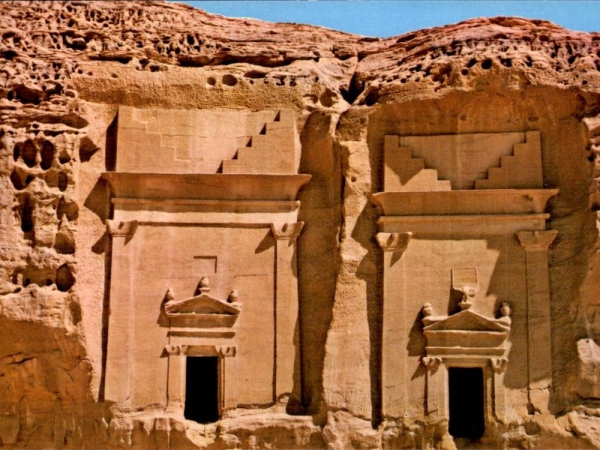
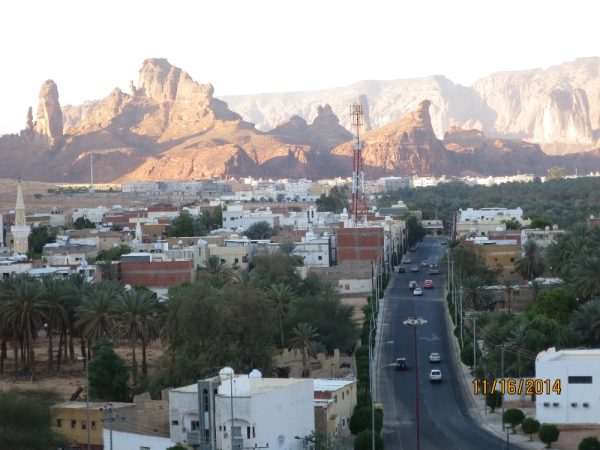
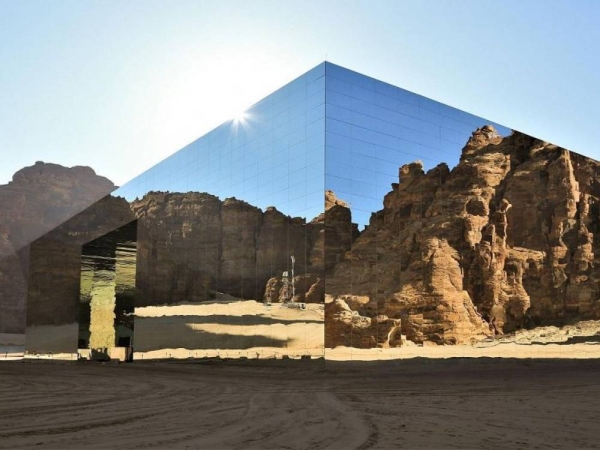
AlUla (romanized: al ‘Ulā) is a governorate located in the northwest of the Kingdom of Saudi Arabia and administratively falls under the region of al-Madinah al-Munawwarah. AlUla is considered one of the important heritage icons recognized by the world. It embraces archaeological sites and rock inscriptions dating back to ancient Stone Age periods. It is one of the leading tourist destinations in Saudi Arabia, and a living global museum according to the visionary designs of the Journey Through Time plan. This was launched by the Crown Prince, Prime Minister, and Chairman of the Royal Commission for AlUla Governorate, His Royal Highness Prince Mohammed Bin Salman Bin Abdulaziz Al Saud, on April 7, 2021.
Geography of alUla:
Naming of alUla
The naming of AlUla is most likely due to its elevation above Wadi Qurh. The exact history of the name or when it was first used for the governorate is not specifically known. However, the people of the Hijaz typically refer to the highlands of valleys as al-Awali or al-Ma'ali, or al-Aalia. The earliest name known for AlUla was Dadan, as it was the capital of the Dadanite and Lihyanite kingdoms. Today, the location of that capital is known as al-Khuraybah, which is recognized as the most developed city during the first millennium BC in the Arabian Peninsula.
Location and borders
AlUla Valley is located in the northwest of Saudi Arabia, about three hundred km from al-Madinah al-Munawwarah. To its east, it is bordered by the governorate of Tayma, administratively under the Tabuk region. To the southeast, it is bordered by the governorate of Khaybar, to the southwest by the governorate of al-Eis, administratively under al-Madinah al-Munawwarah Province. To the west, it is bordered by the governorates of al-Wajh and Duba, administratively under the Tabuk region. To the north, it is bordered by a part of the administrative jurisdiction of the city of Tabuk, Headquarters of the Emirate of Tabuk Region.
Climate in AlUla
AlUla Governorate falls within the administrative boundaries of the al-Madinah al-Munawwarah Province, located in the west of the Kingdom in southwest Asia. As a result, its climate is continental with hot summers and warm, cooler winters. Its climate is also affected by its distance from water bodies, as it is separated from the Red Sea coast by the governorates of the Tabuk region. This leads to lower relative humidity levels, especially in summer, with higher temperatures and increased evaporation, causing humidity levels to drop to levels that increase dryness.
Additionally, its climate is influenced by atmospheric pressure centers. In winter, it's affected by the high atmospheric pressures formed over Central Asia and Eastern Europe and the cold air masses coming from there. These cause a drop in temperatures and, since they come dry, result in little rainfall. In summer, the governorate is affected by the atmospheric pressures formed in the neighboring and local areas and the lows over the African continent. This results in hot winds that raise the temperature, reaching up to 40 degrees Celsius in the summer.

Agricultural wealth in AlUla
AlUla contains a green oasis known for its agricultural richness since ancient times. The oasis is famous for cultivating citrus fruits, watered by freshwater along twenty km, with the number of citrus trees reaching two hundred thousand of twenty-nine types, including oranges, sweet lemons, and Tarnj (Citrus medica), which dates back to ancient times. Tarnj is the oldest citrus in AlUla, used by the ancient Nabateans for making jam and perfumes. Trees of Tarnj are still famous in the governorate to this day.
The oasis also thrives with the cultivation of oranges, the most common, representing 70-80 percent of the citrus produced in AlUla. Among the popular oranges is Jaffa Shamouti, known for its sweet taste. There's also Succari orange with its yellowish-orange color, rich in juice, alongside Boussora orange. Although it has a pale color, it has a rich citrus flavor. There's also the local dark-colored orange, while Mandarin and Clementine oranges are also regionally popular. The oasis provides a suitable environment for many types of lemons, including Bin Zhir lemon used in traditional cuisine, like the Kabsa dish, which is the national dish of Saudi Arabia. Other types of lemons include Chaiiri and sweet Helou lemon.
Besides them, grapefruit is cultivated, with the dark red Star Ruby variety being popular among locals. The Marsh variety is known for being seedless, making it internationally attractive. The oasis also grows Pomelo and Kumquat which is locally known as Maliki. Citrus fruits are not just used as a food source but are also harvested for their valuable medicinal properties, essential oils, and vibrant and unique scents, where both locals and tourists value citrus aromatic oils.
In the oasis of AlUla, there's an abundance of Moringa Peregrina trees. The oasis contains about ninety thousands of these trees, which are famous for the exquisite oils extracted from their seeds. Ben oil (Moringa Peregrina oil) is known for its rare botanical properties, including a light scent, pale color, and skin hydration qualities, making it ideal for perfume and cosmetic production. Moringa Peregrina trees are native to AlUla and have flourished in the AlUla oasis region for thousands of years. These trees are recognizable by their white flowers with five petals striped in a faint pink hue. Thin branches of the tree grow in the shade provided by palm trees.
Historical use of Moringa Peregrina oil dates back to ancient times when the Nabateans settled in AlUla. They began using it in perfume and cosmetic production. When they discovered its value, they started exporting it beyond AlUla to be used by other civilizations. Documented uses of this oil include rare perfumes used by royalty in the fourth century BC and its use by the Etruscan civilization that lived in the mid-first century in Italy.
Date palm cultivation thrives in AlUla and has been an essential economic source for residents since ancient times. The land of AlUla is home to 2.3 million palm trees, spread over about ten thousand ha. The date production in AlUla is estimated at ninety thousand t annually, with the Barni type being the most common. A single palm tree of this type produces three varieties: Mabroom, Mashrook, and regular. Other types include the sweet date in its black and red colors.
Demographics of AlUla
The population of AlUla governorate is estimated to be about 60,103 people, according to the 2022 Saudi census released by the General Authority for Statistics.
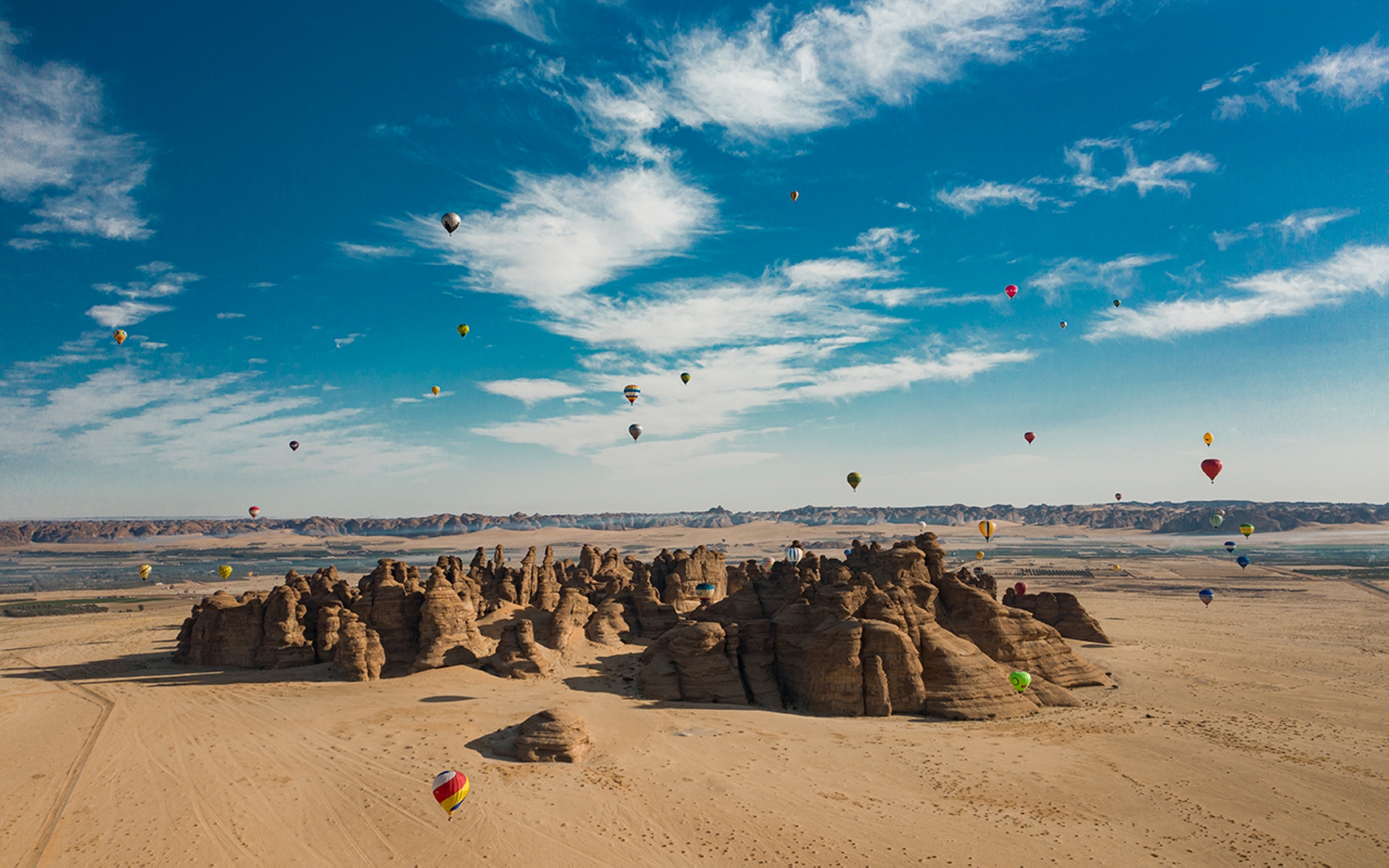
Geological landmarks in AlUla
AlUla is home to numerous natural wonders that have formed over millions of years, featuring unique rock formations. Locally, these formations are named based on their shape and appearance. Among them is the Elephant Rock, also known locally as Jabal al-Fil. It resembles an elephant in terms of its body and trunk shape. It is located approximately eleven km north of AlUla and was formed through natural sculpting and erosion processes, primarily by water and wind. The rock stands at an impressive height of 171 ft and is surrounded by towering mountains that resemble a natural fortress created by nature.
Among these formations are Jabal Ikmah and al-Aqra'a, located to the north of Wadi AlUla. Mount Akma contains carvings believed to date back to the first millennium BC. Mount al-Aqra'a, on the other hand, boasts over 450 inscriptions in the Arabic language, with the Zuhair inscription on Mount al-Aqra'a being one of the oldest inscriptions from the Islamic era.
Al-Jarrah mountain is a vug that looks like a water jar and derives its name from this likeness. In the same vicinity, about an hour outside the city's center, you will find al-Gharameel's stone pillars, which are thin rock formations resembling natural columns sculpted by natural forces. In addition to the Arch Rock, also known as the Rainbow Rock, which is an arc-shaped rock extending from two mountain peaks; the Dancing Rocks, locally called al-Raggasat, which appear as if they're dancing in the middle of the valley surrounded by mountains. Not far away, near Jabal al-Ahmar and amidst the massive tombs of Hegra, stands Face Rock, which bears a striking resemblance to a human face gazing up at the sky.
Cultural heritage in AlUla
The Old Stone Age
Evidence of human settlements dating back to prehistoric times over more than seven thousand years of human history was discovered in AlUla. This is attributed to the availability of essentials for settlement, such as water and fertile soil suitable for agriculture. Its strategic location on the route of major ancient neareastern centers also played a role. Artifacts from prehistoric times have been found on the mountaintops, and rock drawings are spread on their facades.
The Bronze Age
Among the recently discovered artifacts, evidence from between five thousand and two thousand years BC, or the Bronze Age, has emerged. One of the indicators is a tomb found in Hegra dating back to this period, specifically around 2,400 years BC. This discovery indicates a period of settlement during the Bronze Age, which was previously unknown. Old sources mention that human settlement in AlUla began in the third millennium BC, during the era of the Arabian Kingdoms.
The middle Arabian Kingdoms era
An essential period in AlUla that distinguished the civilization of the region occurred in the first millennium BC. Urban settlement reached its peak during this time. An example of this civilizational development is the Dadan site, recently named al-Khuraybah, which formerly represented the capital of two consecutive kingdoms: The Kingdom of Dadan, known for its precise stone constructions and landmarks carved into the desert mountains surrounding the AlUla valley. This kingdom existed from the late ninth century to the early eighth century BC. After Dadan, the Kingdom of Lihyan existed from the fifth century to the second century BC. Both the Dadan and Lihyan kingdoms represented the first political entity in AlUla.
AlUla prospered during this significant civilizational period, due to its location on the overland trade route. Caravans from the south of the Arabian Peninsula, which originated in Yemen and passed through Najran, then through al-Faw Village in the center of the peninsula, would split into two paths. One would pass through Hijaz, then AlUla, then Tayma. From Tayma, it branched to Iraq and the Levant. AlUla was one of the stations on this trade route, where caravans stopped for supplies and rest, which directly contributed to the economic and cultural flourishing of the region during this time.
The modern Arabian Kingdoms era
In the first century BC, the Nabateans settled in AlUla, specifically in Hegra, after they migrated from their first capital, Petra in Jordan, during the Roman invasion. These were Arabian tribes that had a widespread kingdom of which AlUla was in the south. After moving from their first capital, they made Hegra their second capital and strategic base on the southern borders of their kingdom. The Nabateans inhabited the region until the second century. Their presence is evidenced by massive rock-facade tombs, religious places for worship, residential areas, and water facilities. They remained until the Nabatean kingdom fell and was incorporated into what is called the Roman presence in the Arabian Peninsula, which lasted until the fourth century.
Early Islamic era
In the Islamic era, AlUla became a primary station on the Hajj route coming from the Levant. A fortress and stations were established to serve the pilgrims. Sources mention that the city of Qurh, currently called al-Ma'abiyat, was the center of civilization at the time and it reached the height of its prosperity in the Islamic era. By the tenth century, it was described as the second city in Hijaz after Makkah al-Mukarramah and continued to be so until the end of the twelfth century.
The first scientific study of the artifacts in al-Mabiyat was by a mission from the Institute of Archaeology at the University of London in 1968, which focused on studying pottery spread in the area. Their reports indicated that the site dates back to the Umayyad and Abbasid periods, with no evidence of artifacts postdating the twelfth century.
Al-Mabiyat spans an area of about 640,000 m², an uninhabited site surrounded by remnants of a winding wall with three gates. An elevated hill connected to it has a fortress built on its top. A tomb monument was discovered in 1965, and various coins were found in 1984, including a half dinar bearing the name of al-Aziz Billah al-Fatimi. Excavations revealed housing units and an urban structure similar to Islamic cities, with narrow streets, clay-covered floors, wooden-doored houses and shops, round columns, facades containing textual scriptures, and plaster ornaments.
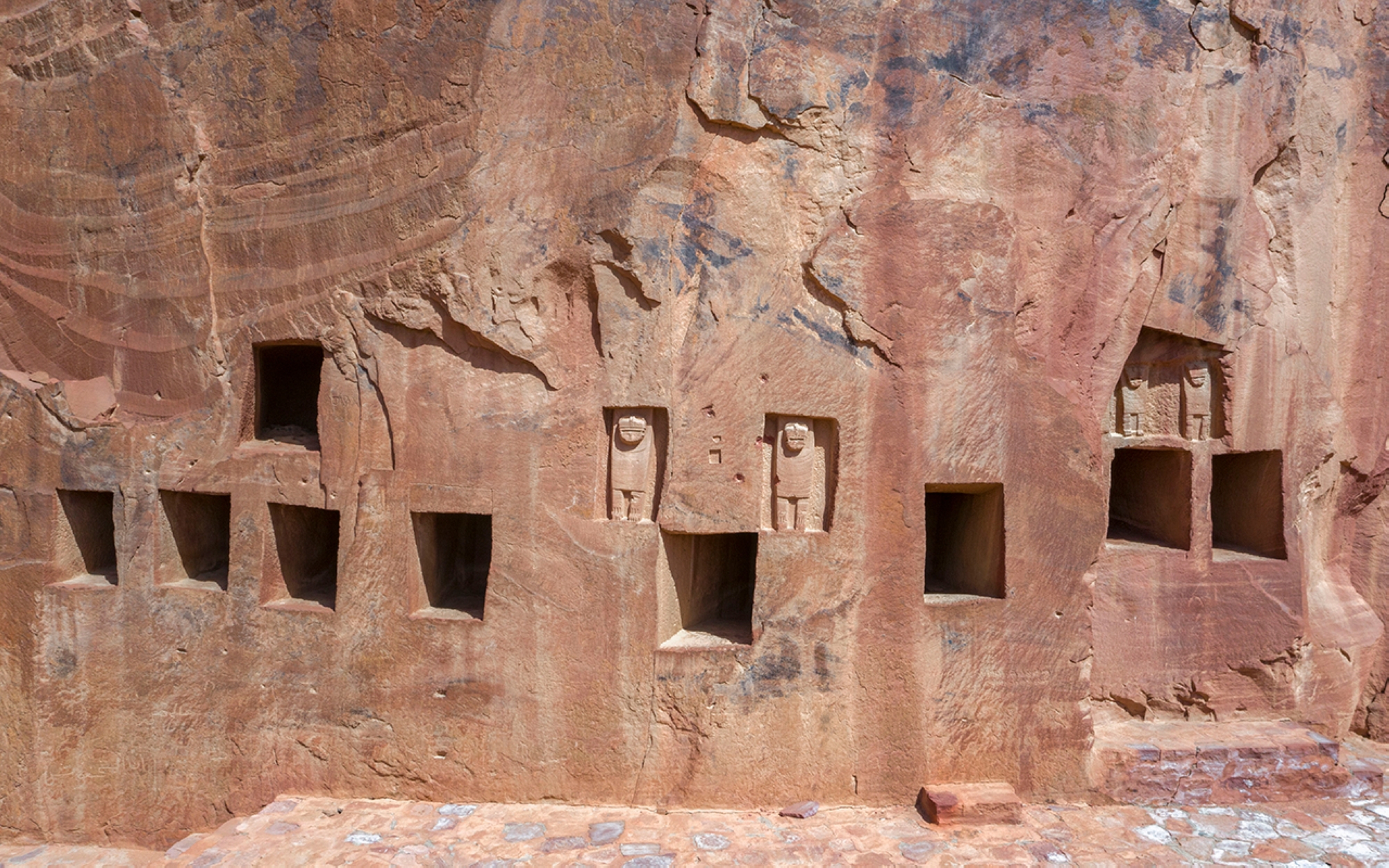
Archaeological finds in AlUla
The Lihyanite Statue
An excavation team working at the Dadan site discovered a massive human statue in September 2022. The statue dates back to the Lihyan Kingdom, which inhabited the region around the middle of the first millennium BC. The statue is made of sandstone, weighs about eight hundred kg, and is over two m in height. The statue shows the effects of erosion over various epochs. The detailed craftsmanship demonstrates the artistic prowess of sculpting at that time, showcasing intricate details on the carved statue. This sculpting style is categorized under the Lihyanite school, known for its attention to intricate details, drawing inspiration from regional artistic influences. The Lihyanite statue is currently displayed in the Louvre Museum in Paris, following a five-year collaboration agreement between the Royal Commission for AlUla Governorate and the Louvre Museum.
Hinat's facial structure
Excavation teams discovered a tomb in Hegra that holds the remains of a woman named Hinat. Archaeological experts believe she died in the first century BC, meaning she lived about two thousand years ago, specifically during the Nabatean period. The tomb is located in Hegra, the first Saudi site listed on the United Nations Educational, Scientific and Cultural Organization (UNESCO) World Heritage list, and it features more than 110 ancient tombs (Nabatean graves) carved into rock formations. In 2023, experts from the Royal Commission for AlUla Governorate finished reconstructing a digital model of Hinat's facial structure. Sources point to Hinat's significant status within the Nabatean society as she possessed enough wealth to construct her private tomb in Hegra.
An informational profile, prepared by a group of experts on the Nabatean civilization, included pictures of Hinat's clothing and jewelry found within her tomb, explaining the scientific basis for reconstructing her face, providing precise instructions and detailed explanations of the process. The experts were joined by a production team with experience in anthropology, reconstruction, and physical model-making. Hinat's structure will be displayed in the Visitors' Center in the historic city of Hegra.
Jabal Umm al-Daraj brazier
Preserved in the Archaeology Department Museum at King Saud University is a brazier carved from pinkish sandstone, used for burning incense. Discovered at Jabal Umm al-Daraj, it dates back to the Lihyan Kingdom around the middle of the first millennium BC. The cylindrical brazier has two protruding sides at the top. In the lower part, horizontally aligned intaglio incised triangles are visible. The exterior of the brazier is divided into four bands: the first, located directly under the basin, is unadorned; the second bears carvings in the shape of a repeating Arabian oryx along the band; the third band is plain, followed by a band with intaglio incised carvings. In the middle of the latter, there is an incised image of a cow, created using the relief engraving method. The last band is left empty, representing the base of the brazier. This brazier stands as an important discovery in the history of AlUla, as it exemplifies a design that integrates multiple geometric shapes. Its large size suggests it was used to burn significant amounts of incense during important events. The brazier was featured in the Treasures of the Kingdom through the Ages exhibition.
Lioness engraving piece
It is a rectangular stone block made of sandstone, preserved in the Antiquities Department Museum at King Saud University. It was discovered at al-Khuraybah site and dates back to the mid-first millennium BC, during the civilization of the Kingdom of Lihyan. Carved in high relief on the block is an image of a lioness standing on all fours, with a curved back. Detailed features are engraved on its body, depicting various parts of the body and different triangular shapes. Circular lines can also be seen on the lioness's neck, and a part of its face is missing, while the remaining part shows a fully turned eye. Below the lioness, a standing lion cub is depicted on its legs, nursing from its mother. Around its neck, there are incised lines.
The lioness carving is of significant importance in understanding the history of AlUla because it exhibits a high level of realism and clear expression. This suggests that ancient AlUla was once an environment rich in rainfall and vegetation, allowing lions to live and thrive in the region. The lioness carving was among the archaeological pieces displayed in the exhibition Archaeological Treasures of the Kingdom through the Ages.
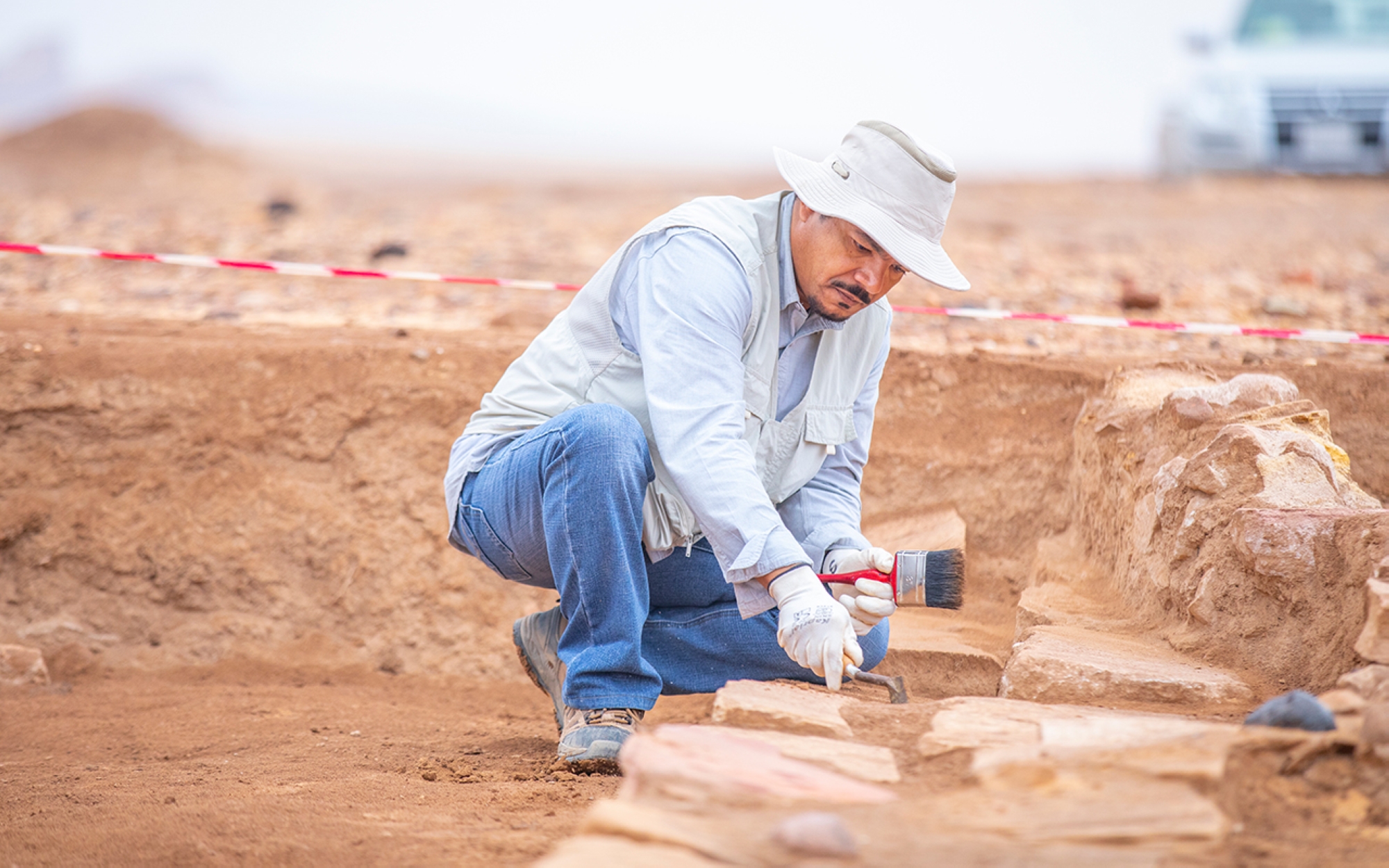
Archaeological excavation phases in AlUla
The Saudi-French partnership
Excavation in AlUla began through a Saudi-French partnership in archaeology and cultural collaboration. The first archaeological mission began its work in the historic city of Hegra in AlUla in 2002. Since then, over fifteen archaeological missions have been launched across Saudi Arabia. The team carried out conservation projects and fieldwork, such as surveys, excavations, and specialized research, involving dozens of archaeologists and experts from both countries. This Saudi-French partnership has been pivotal in both countries' commitment to preserving human heritage and has played a key role in the continuity of archaeological excavations in AlUla.
The Ministry of Culture and the Royal Commission for AlUla celebrated in December 2022 the twentieth anniversary of the Saudi-French partnerships. These partnerships have achieved significant results in the fields of archaeological preservation, cooperation in archaeological surveys, and excavations. Represented by the Heritage Authority, the Ministry of Culture organized a two-day seminar at the National Museum in Riyadh, where the history of the Saudi-French archaeological missions in AlUla and other cities was discussed. They also looked at the latest developments about ongoing projects in Saudi Arabia, with participation from experts from both Saudi and French institutions.
Among the archaeological pieces discovered by the Saudi-French excavation teams is a head made from basalt stone found in one of the tombs, dating back to the Late Stone Age. The teams also discovered the well-preserved skeletal remains of a forty-year-old Nabatean woman named Hinat. In the Dadan Kingdom, a variety of statues made of sandstone, either full-formed or half-formed, were found. These statues date back to the period from the seventh century to the first century BC. The achievements of the Saudi-French partnership continued to progress, and the Royal Commission for AlUla Governorate signed an agreement with the Louvre Museum in Paris, which included displaying the Lihyanite statue in the Louvre Museum for five years.
King Saud University missions
Represented by its Archaeology Department, King Saud University has been excavating in AlUla since 2004. Their first work was at the Ma'abiyat site, formerly known as Qurh. This site is significant for early Islamic sites, especially from the Umayyad and Abbasid periods, which spanned from the second to the fourth Hijri centuries. The research teams revealed the wall surrounding the city and discovered residential units at the site. Studies by the team confirmed it was a large Islamic city rich in archaeological and civilizational components.
The university teams also worked at another site in AlUla, al-Khuraybah, starting their work there in 2005. They discovered several archaeological sites, including the Lion Tombs, al-Hawd al-Hajary (Monolithic Basin), various rock inscriptions, carved pieces, and scattered archaeological findings alongside architectural units built of sandstone cut from the adjacent mountain.
Archaeological and heritage survey program in AlUla
The Royal Commission for AlUla launched an archaeological and heritage survey program in AlUla in 2018. The program aims to employ the latest methodologies and technologies in archaeological and heritage surveys in AlUla, such as aerial surveys using LiDAR technology, and aerial photography using light aircraft, helicopters, and drones. The program involves a team of local and international archaeological experts and scholars, including teams from the United Kingdom, France, and Australia in collaboration with a team from the Archaeology Department of King Saud University and a group of department students. Their task is to conduct surveys, document archaeological sites in the governorate, draw comprehensive maps, and then gather the results in a special heritage database to benefit from them and use them in developing plans to preserve, study, evaluate, and rehabilitate the region’s unique features. The Heritage Authority announced in 2021 the resumption of archaeological survey and excavation projects in AlUla.
International fellowship program in archaeology
The Royal Commission for AlUla announced in December 2022 the launch of an International Fellowship Program in Archaeological Protection, in collaboration with UNESCO. The program aims to uncover civilizations in the northwest Arabian Peninsula and become acquainted with them, in cooperation with archaeological scientists and heritage experts from the Kingdoms Institute affiliated with the Royal Commission for AlUla Governorate. The program includes a four-month workshop in AlUla, the first of its kind in the region. It enhances the partnership between the Royal Commission for AlUla Governorate and UNESCO, focusing on capacity building and transferring scientific knowledge through the development of basic skills in heritage preservation and research. It also contributes to establishing the Kingdoms Institute as a major center for archaeological research in the region. Participants in the program work on field and office tasks in AlUla, participate in studying archaeological pieces, and preserve important archaeological landmarks and main sites.
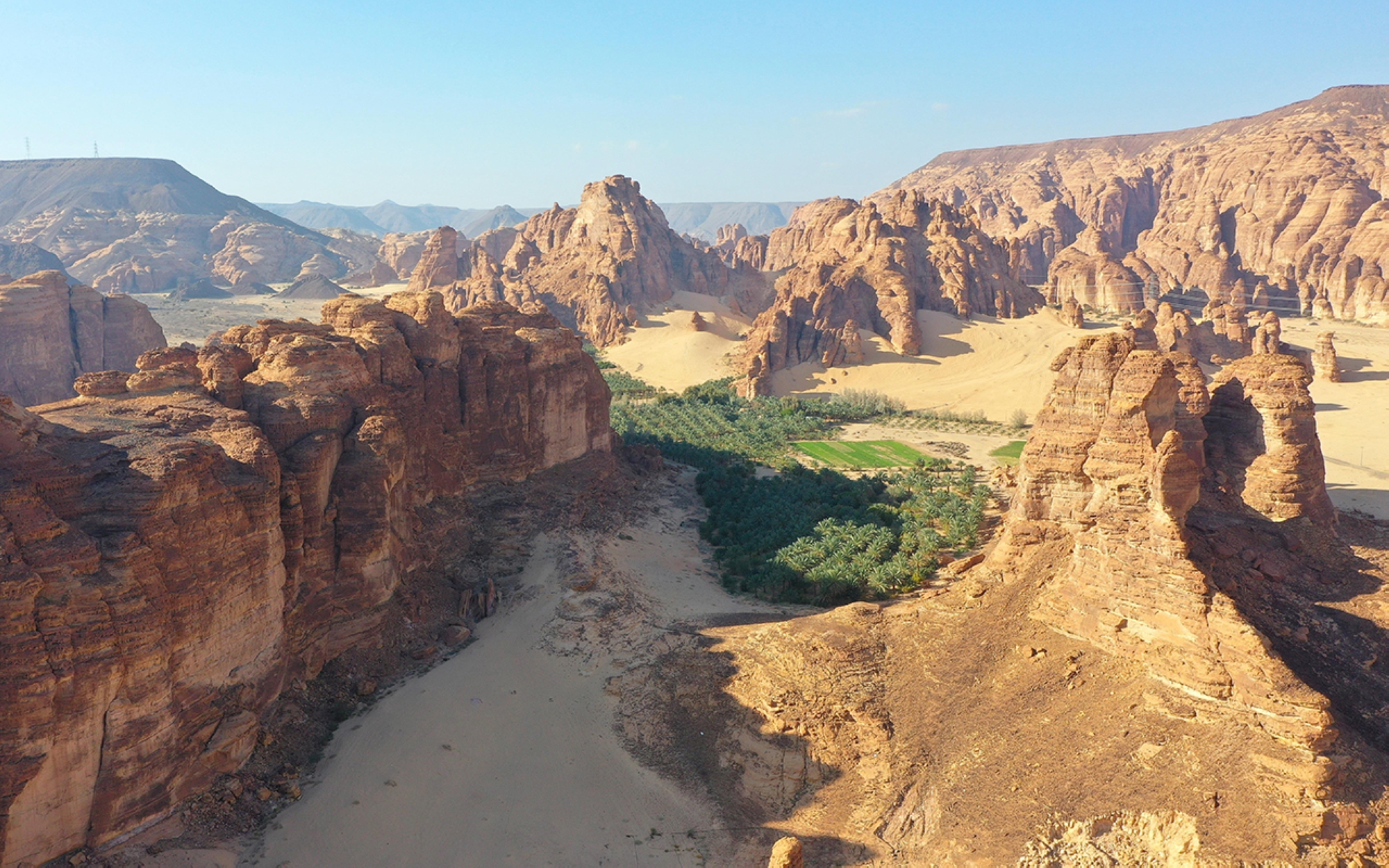
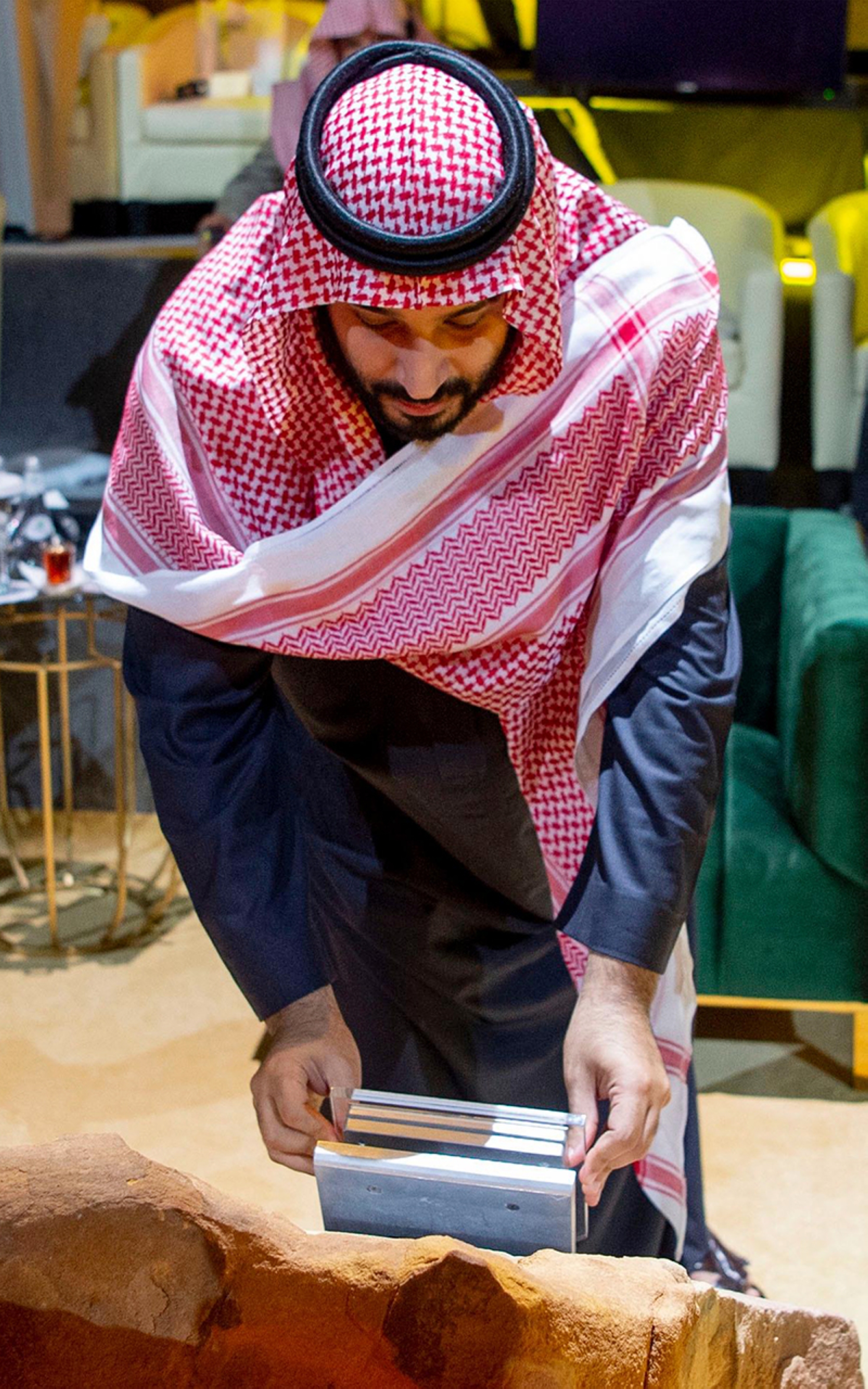
AlUla in Saudi Vision 2030
AlUla Vision Program
Crown Prince, Prime Minister, and Chairman of the Board of Directors of the Royal Commission for AlUla, His Royal Highness Prince Mohammed Bin Salman Bin Abdulaziz, sponsored the launch event for AlUla Vision on February 10, 2019. During this event, the Royal Commission for AlUla Governorate announced a responsible development plan for AlUla to enhance its position and prepare it to be a global destination for heritage, in collaboration with the local community and a team of international experts. This will be done while preserving the natural and cultural heritage of the area, in line with its historical value and civilizational stature. AlUla is one of the enablers to achieve the goals of Saudi Vision 2030.
AlUla Vision includes launching several developmental projects, such as the inauguration of the Sharaan Nature Reserve, the Sharaan Resort, and the Arabian Leopard Fund. AlUla Vision launch event was attended by local and international officials, investors, international art and culture figures, and global experts in heritage and nature. AlUla Vision aims to make responsible and impactful transformations, balancing the preservation of rich natural and cultural heritage.
A living museum and global face
Saudi Arabia has focused on the archaeological and historical landmarks in AlUla, as they are an extension of human civilizations that have existed since ancient human history and are a part of the history of the Arabian Peninsula. Saudi Vision 2030 emphasizes preserving this history and ancient heritage in AlUla and developing it into an open natural museum, preparing it to receive visitors from around the world. AlUla is a unique tourist destination, and its ruins are treasures for scholars of archaeology, geography, geology, and human societies. As part of this endeavor, a team of archaeologists began extensive excavations in the Kingdom of Dadan in October 2020 to discover more about this human history. AlUla was also selected as one of the seventeen destinations announced by the Saudi Tourism Authority for the Winter Around You season. The Royal Commission for AlUla Governorate set diverse paths to develop visitor centers at the four main sites: Hegra, Jabal Ikmah, Dadan, and the Old Town.
Economic future
AlUla is part of a series of projects aiming to enhance economic diversity in Saudi Arabia, in line with the objectives of Saudi Vision 2030, through supporting the tourism sector. By 2035, after the completion of the AlUla development strategy, it is expected to create thirty-eight thousand new job opportunities, consistent with the expected population growth of 130 thousand inhabitants. Furthermore, it will contribute to enhancing Saudi Arabia's economy, with the total contribution to the gross domestic product (GDP) expected to reach about SAR120 billion by 2035. This is driven by several economic engines, such as tourism, arts, culture, and agriculture.
In support of AlUla development plans, Saudi Arabia has invested more than SAR57 billion, with SAR12 billion allocated for the development of the basic infrastructure in AlUla, thus providing quality opportunities that stimulate and accelerate business and investment. Approximately SAR7.5 billion has also been invested in development projects, which included expanding AlUla International Airport, enhancing security in the region, and developing major tourism assets, such as Ashar Resort and Maraya Hall, to highlight business opportunities in the region and their investment returns.
Enhancing quality of life
The Royal Commission for AlUla launched the Sustainable Urban Planning Program in al-Mahash neighborhood, in line with the objectives of Saudi Vision 2030. The program aims to enhance the quality of life for the residents of AlUla, based on the Commission's commitment to promote comprehensive sustainable development. This development prioritizes human development before the place itself by relying on architectural models and designs, inspired by traditional architectural styles in AlUla.
The sustainable urban development plan in AlUla relies on innovative infrastructure to transform it into an ideal destination for living and working, offering life's requirements within a unique urban-style model neighborhood with comprehensive services. The environment offers harmony between humans, nature, and the rich heritage of the governorate, in addition to essential services and facilities, such as green spaces, sports fields, and parks.
The Royal Commission for AlUla
About the Commission
The Royal Commission for AlUla was established by a royal decree on July 20, 2017. The board of directors is chaired by the Crown Prince and Prime Minister, His Royal Highness Prince Mohammed Bin Salman Bin Abdulaziz Al Saud. The commission is responsible for the development of AlUla in line with its historical value, heritage sites, natural landscapes, and human heritage. The commission follows a long-term plan to achieve sustainable transformation in the region, making it a key archaeological and cultural destination in Saudi Arabia. The development works planned in AlUla include various initiatives in the fields of archaeology, tourism, culture, education, and arts, emphasizing the commitment to enhance tourism in Saudi Arabia in accordance with Vision 2030.
Sharaan Nature Reserve and Resort
The eastern valley of AlUla, named Sharaan, has been designated as a natural reserve to begin the region's journey towards environmental balance, reaffirming Saudi Arabia's commitment to environmental protection. Sharaan Nature Reserve aims to protect significant natural habitats, restore the ecosystem, and preserve endangered species in the area. The reserve emphasizes protecting and connecting exceptional environmental areas while maintaining the natural balance between living organisms and the desert environment. Sharaan’s terrain varies, housing red rock canyons, sloping valleys, expansive valleys, and rocky plateaus, allowing diverse local species to inhabit their natural habitats.
Sharaan area encompasses various desert habitats, which were home to many local plants and animals, including acacia forests, Nubian ibex, ostriches, deer, and predators such as the Arabian leopard. The reserve's borders are fenced to prevent the entry of animals that could harm the vegetation, allowing the area to rejuvenate its native plants, which will provide natural food for native species to be reintroduced into the reserve. Other species have also been protected, such as the rock hyrax, wild desert rabbit, and various bird species like the green bee-eater, laughing dove, lark, and several birds of prey like eagles, falcons, and the long-legged buzzard (Buteo rufinus).
The Global Fund for the Arabian Leopard
The Arabian Leopard Fund was established in alignment with the Royal Commission for AlUla's strategy and the goals of Vision 2030 to achieve environmental sustainability and support non-profit sectors in Saudi Arabia. The fund aims to conserve and protect the Arabian leopard from extinction, increase its numbers in its natural habitats, support national and international conservation efforts, encourage communities to contribute, and preserve the ecosystems in which it lives, as it is one of the endangered animals in the Arabian Peninsula. The International Union for Conservation of Nature has classified the Arabian leopard as critically endangered.
Protection program
The Royal Commission for AlUla launched the Hammayah Protection program, a community participation program for the residents of the governorate. The program aims to engage the local community directly and effectively in preserving AlUla Governorate's heritage, environment, and nature for future generations. The commission launched a website for the initiative to introduce it and encourage community participation that contributes to the authority’s work to preserve AlUla’s historical and human heritage. The Hammayah program offers educational and training workshops to introduce historical, archaeological, and heritage sites in AlUla and how to preserve them, serving the commission's main objective to make AlUla a tourist destination at the local, regional, and global levels.
AlUla Scholarship Program
The Royal Commission for AlUla launched the AlUla Scholarship Program to invest in human capital and enhance the cognitive abilities of the sons and daughters of AlUla, in line with the comprehensive development strategy in AlUla, in preparation for making AlUla a global tourist destination. The commission organized a university forum with the participation of about fifty international universities representing scholarship countries, including the United States of America, the United Kingdom, France, and Switzerland. The program focuses on developing skills in areas serving the commission's vision and objectives, such as tourism, hospitality, agriculture, history, archaeology, arts, museums, environmental sciences, design, urban planning, and facility and service management.
The program's third phase was launched in February 2022, announcing the nomination of about three hundred male and female students. The first phase was launched in 2018 with 168 students, and the second phase in 2019 with 292 students. To enhance the program's outcomes and develop human capital, the commission launched AlUla Language Institute in late November 2021, which includes an eight-month qualification program. The program comprises training tracks in skills, language, introduction, activities, and events. Candidates attend various courses and workshops to prepare for their academic studies in scholarship countries.
International events in AlUla
The forty-first Session of the Gulf Cooperation Council (GCC)
The Supreme Council of the Gulf Cooperation Council held its forty-first session on January 5, 2021, in the Maraya Hall in AlUla Governorate. Acting on behalf of the Custodian of the Two Holy Mosques King Salman Bin Abdulaziz Al Saud, the meeting was chaired by His Royal Highness Prince Mohammed Bin Salman. The AlUla Summit, named after Sultan Qaboos and Sheikh Sabah, concluded with a focus on the lofty goals of the GCC as stipulated in its charter, aiming for cooperation and integration among member states in all fields, to achieve unity, enhance the regional and international role, and work as an economic and political unit to ensure peace, stability, and prosperity in the region.
The first Hegra conference
The Royal Commission for AlUla hosted the first Hegra Conference for Nobel Peace Prize winners of 2020 in the Maraya Hall, from January 30 to February 1, 2020. The conference was attended by around twenty Nobel Peace Prize winners, as well as approximately one hundred thought leaders, community leaders, politicians, and scholars from thirty-two countries worldwide. The conference theme was Knowledge Transfer: Shared Heritage, reflecting AlUla's historical role as a crossroads of various cultures, civilizations, and nations for thousands of years, with an emphasis on the importance of exchanging ideas and knowledge as a fundamental principle of humanity.
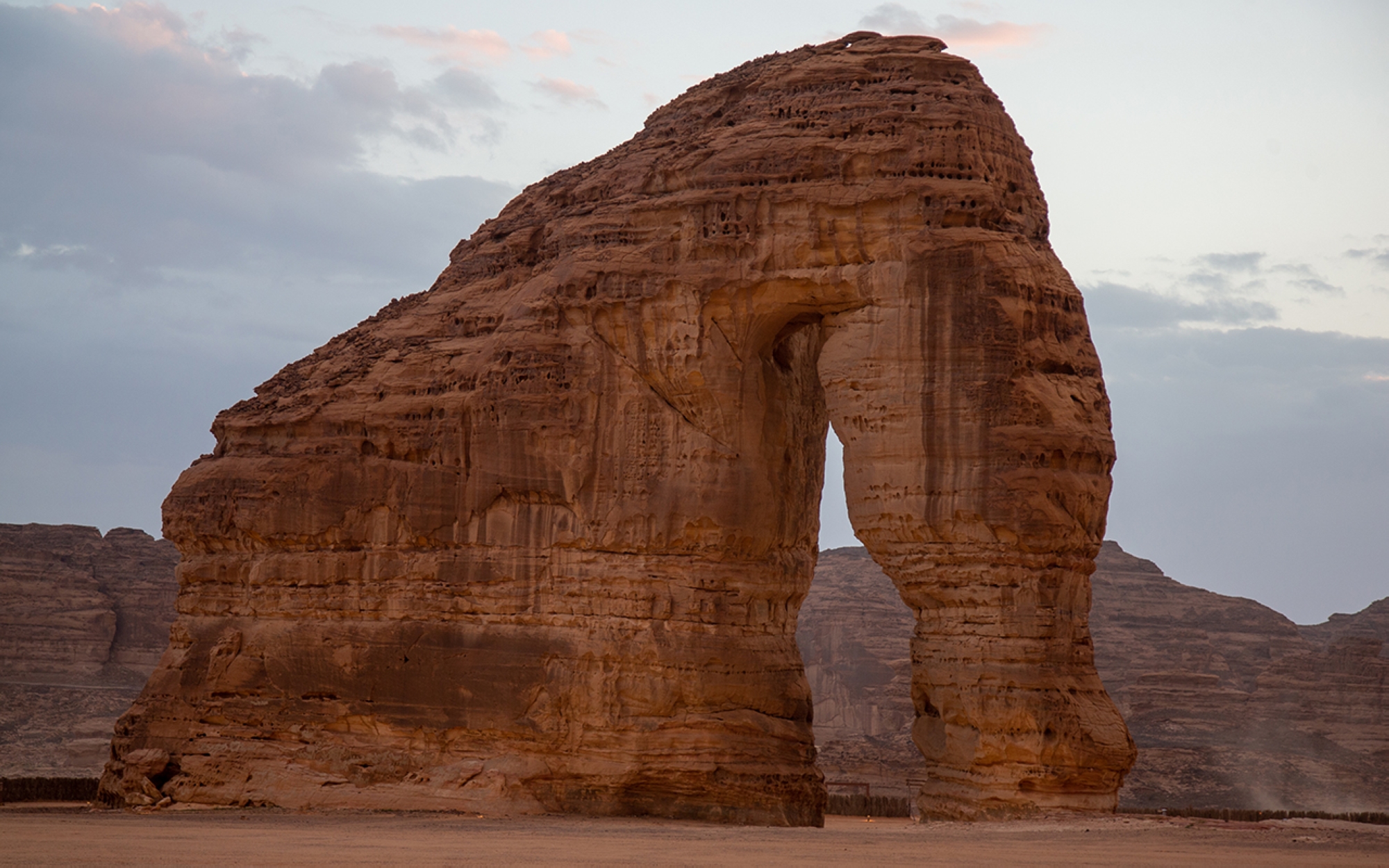
Tourism in AlUla
Winter at Tantora
This is a seasonal festival organized by the Royal Commission for AlUla during the winter season. It features various artistic and cultural events. The festival's name, Winter at Tantora, is inspired by the Tantora, a pyramid-shaped sun clock historically used by the people of AlUla to tell time and determine the days of the winter solstice to celebrate the beginning of the farming season which corresponds to the beginning of the winter season. The year 2023 marks the fourth season of the Winter at Tantora Festival, which has been celebrated for three previous seasons. The festival dedicates an array of musical events, activities, experiences, and rich adventures over an entire month.
Maraya Hall
Maraya Hall is a massive, cube-shaped structure located in one of AlUla's desert valleys. The external structure of the building is covered with reflective panels, consisting of 9,740 m² of mirror glass, reflecting the surrounding beauty of vast deserts and mountains. This makes it the world's largest reflective building for 2019, according to the Guinness World Records. The theater has a height of around twenty-six m and features a massive retractable window of about eight hundred m², blending nature and entertainment for its visitors. In 2020, the hall won the International Architectural Award (Architizer A ) Award, which celebrates the best architecture of the year.
Maraya Hall celebrates AlUla's historical role, both ancient and modern, as a crossroads of civilizations from the past and as a current global tourist destination. The hall, one of the architectural wonders of the world, was designed by the Italian designer Florian Boje of the Geo Forma Design Office in Milan, Italy. Inspired by the surrounding nature, the design reflects the architecture of the Nabateans from ancient civilizations. Maraya has become a cultural and arts scene in AlUla, hosting numerous regional and international events, musical concerts, entertainment shows, temporary and permanent art programs, and independent local films, engraving AlUla's name as a global cultural center.
AlUla Moments Festival
It is a tourist season organized in AlUla Governorate. The first edition was in December 2021 and lasted until the end of March 2022. The season presented a diverse range of events to celebrate the historical and cultural heritage of AlUla, under the slogan Celebrate every moment with AlUla Moments. The season included four festivals: Winter at Tantora Festival, AlUla Arts Festival, AlUla Sky Festival, and AlUla Relaxation Festival. The season achieved noticeable success, with the number of tickets for accompanying events reaching 109,000. Additionally, during the weekends, eleven artistic concerts were held at the Maraya International Theater, showcasing a group of international artists. AlUla Airport also witnessed an increase in passenger numbers, synchronized with an increase in local flights from Riyadh, Jeddah, and Dammam cities, and the inauguration of direct flights from Paris and Dubai.
Development projects in AlUla
Journey Through Time Project
It is a project aimed at revitalizing and rehabilitating the main archaeological area in AlUla sustainably. It is part of the AlUla Development Program to transform it into a global destination. Prince Mohammed Bin Salman unveiled the design vision for the Journey Through Time master plan in April 2021. The plan consists of three main phases, with the first to be completed by the end of 2023. Inspired by AlUla's nature and heritage, the plan features five centers spanning twenty km from AlUla center, with main stops along the Journey Through Time route. These start from the Old Town center in the south, passing through Dadan Oasis center, Jabal Ikmah Oasis, Nabatean Oasis, and ending at the archaeological city of Hegra in the north.
The centers identified in the plan are cultural landmarks reflecting AlUla's unique terrain. The project's spatial design for the centers and cultural facilities aims to provide a unique experience for visitors, enabling them to explore the region's rich history. In addition to the centers, there are fifteen new cultural facilities, including museums, exhibitions, and tourist attractions, dedicated to each center. This project includes an addition of approximately five thousand rooms. Each center offers multiple accommodation options, including hotels, eco-tourism resorts, and luxury inns.
Kingdoms Institute
Established as part of the Journey Through Time masterplan, the Kingdoms Institute for Archaeological Studies is one of the projects of the Royal Commission for AlUla. Located in Dadan Oasis, its urban design is inspired by the Dadanian civilization, creating a prominent landmark in the mountains opposite the archaeological site, mirroring the vast building patterns found there. The institute encompasses several primary archaeological programs, including the conservation of rock arts, inscriptions, languages, agriculture, sustainability in prehistoric times, communication, archaeological records, monitoring archaeological sites, their safety, and management. The institute also specializes in studying and analyzing archaeological artifacts and their contents using advanced scientific methodologies, adhering to global practices for excavations and preservation.
It focuses on over two hundred thousand years of AlUla's human and natural history, specifically during the Kingdoms era, that is, the period in which the kingdoms of Dadan, Lihyan, and the Nabataeans lived in the region during the period from the first millennium BC to 106. The institute collaborates with excavation missions comprising experts from various specialties working across AlUla, including teams from Saudi and international entities such as King Saud University, UNESCO, the International Council on Monuments and Sites (ICOMOS), the French National Center for Scientific Research, the German Archaeological Institute, and the University of Western Australia, and various other international organizations.
Wadi al-Fann (Valley of the Arts) Project
The plan for the Wadi al-Fann Project was announced in June 2022. With an estimated area of sixty-five km², it is scheduled for completion in 2024. Wadi al-Fann will feature artworks inspired by AlUla's nature from various Saudi and international artists. The project aims to attract art enthusiasts from around the world, providing a unique blend of integrated creative artworks with the natural environment. The initial program in 2022 included temporary exhibitions, artist residences, and open-air public seminars, along with a vibrant visitor program, encompassing performances and valley tours. There is also an educational opportunity for the nation's youth in AlUla and the Kingdom.
AlUla Film Program
As part of the Royal Commission for AlUla's strategy, AlUla Film Administration was launched. It focuses on supporting and facilitating film shooting in AlUla, offering filmmakers an opportunity to discover suitable filming locations amidst AlUla's breathtaking nature and historical ruins. The administration also provides support for obtaining necessary approvals, facilitating procedures and permits, and offering logistical assistance. AlUla is a unique destination for producers and filmmakers due to its deep-rooted human and natural history. AlUla Film Administration emphasizes supporting and stimulating local productions by collaborating with various governmental entities interested in filming and producing movies in AlUla. This is part of the commission's objectives to contribute to achieving Saudi Vision 2030 by supporting national talent in the film industry, enhancing its environment, and raising its standards towards advanced levels.
Al-Jadidah Site
Al-Jadidah region is located in the center of AlUla Governorate, adjacent to the oasis and the Old Town. It's a village divided into five public squares distinguished by a unique local community design. These are: the Art Square, Our Square, al-Muayyidah Square, The Canal Square, and The Oasis Square. Additionally, there's the recently established Incense Road, which connects al-Jadidah to the Old Town. Al-Jadidah Village was designed to be a tourist destination comprising several shops, restaurants, galleries, an art cinema house, an outdoor roller-skating rink, and schools for arts and music. The Old Town of AlUla contained nine hundred clay-brick homes, four hundred shops, and five squares. In the past, the city walls had fourteen gates that were opened in the morning by AlUla residents to welcome traders, pilgrims, and travelers. The city also houses remains of stone and clay structures from that era.
AlUla Design Studio
AlUla Design Studio was established by the Royal Commission for AlUla and the French Agency for AlUla Development, in cooperation with a team of urban planning experts. The studio aims to offer developmental opportunities for the community within AlUla's urban development plans. The studio provides architectural consultations and advice to citizens and engineers to ensure buildings in AlUla meet required quality standards and harmonize with AlUla's unique natural and urban landscape. The consultations pertain to building designs, expansion, modification, and restoration across all design stages, from developing an idea to finalizing the design.
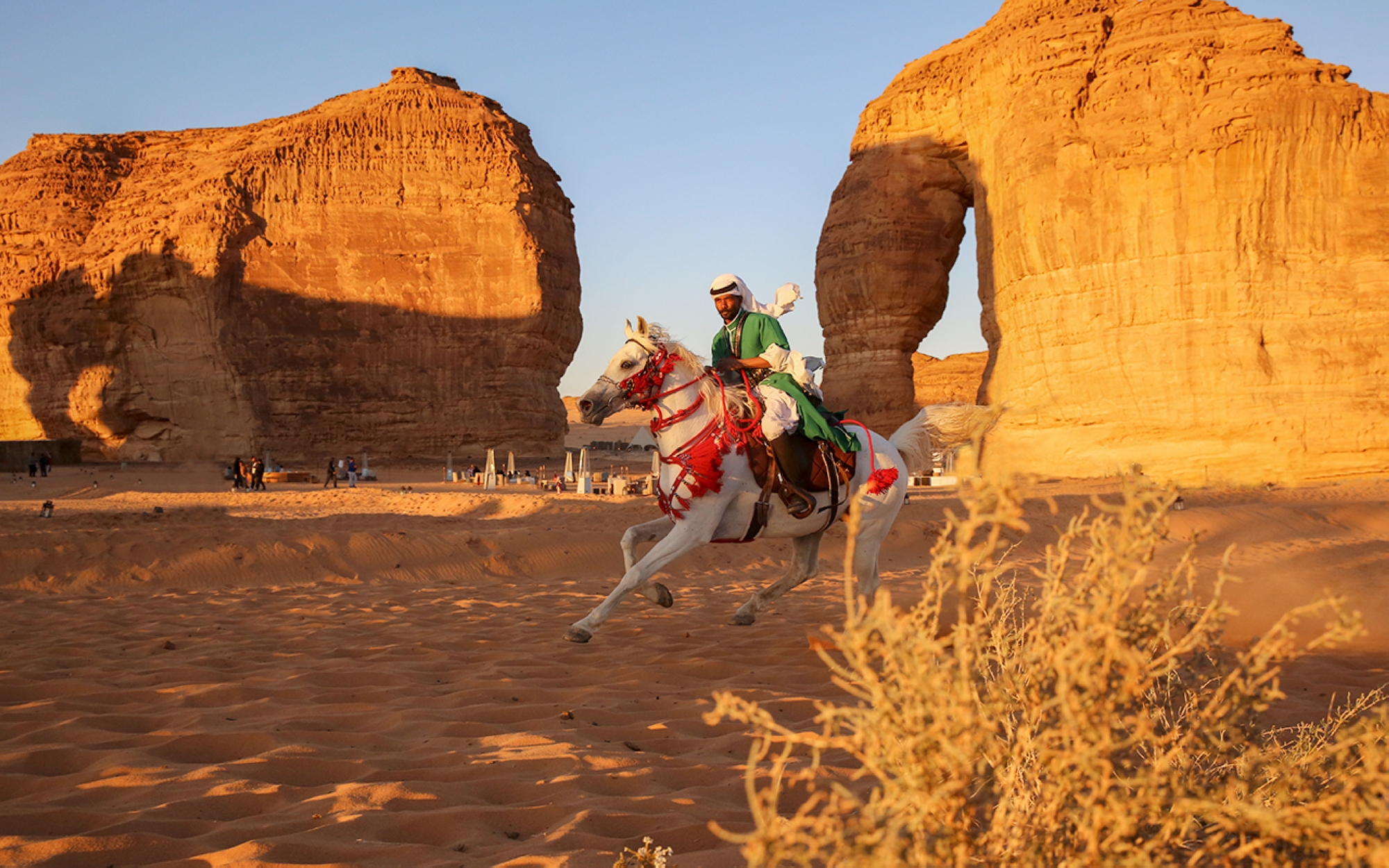
Sports in AlUla
Custodian of the Two Holy Mosques International Endurance Championship
The Royal Commission for AlUla, in partnership with the Saudi Arabian Equestrian Federation and under the supervision of the International Equestrian Federation, hosts the Custodian of the Two Holy Mosques International Endurance Championship. The fourth edition of the championship started on March 4, 2023, with two hundred male and female riders from around the world representing forty countries. The race's distance is 120 km, passing through the desert and historical landmarks of AlUla. The race is divided into four stages: the first 38.2 km, the second 32.1 km, the third 27.3 km, and the fourth 22.4 km.
AlUla Camel Cup
AlUla Camel Racing Cup is one of the sporting events hosted by the Royal Commission for AlUla in cooperation with the Saudi Camel Racing Federation. The competition took place from March 14-17, 2023. The race aims to promote camel racing as a symbol of Saudi Arabia's heritage and culture, showcasing AlUla's authenticity and its natural cultural environment. The race is an extension of a season filled with camel races in Saudi Arabia and the region. The prize value exceeds eighty million riyals, with the race consisting of sixteen rounds: Six for marathon races and ten for elite races. It also includes a variety of events for attendees, including artistic, musical, and cultural performances, a heritage market, and artistic and craft exhibitions showcasing the rich camel culture.
Art and culture in AlUla
Addeera School for Arts
It is the first specialized center for arts and design in AlUla. Located in al-Jadidah Village, the vibrant artistic and cultural hub in AlUla, the school welcomes the people of AlUla and its guests, offering free weekly workshops to introduce local arts and traditional crafts in AlUla. Previously known as the Girls' School, which was the first high school in AlUla, it has recently transformed into a center for teaching traditional arts, organizing exhibitions, creative collaboration programs, and stimulating artistic and cultural movement in the local community.
Artist Residency Program in AlUla
The Royal Commission for AlUla, in partnership with the French Agency for AlUla Development, launched the first edition of the AlUla Artist Residency Program. This program is based on research and production and lasted for eleven weeks from November 1, 2021, to January 14, 2022. The program was centered around the oasis, with the theme of the experience being 'Reviving the Oasis.' The work of the artists and researchers focused on the AlUla Oasis, which is one of the prominent natural sites. AlUla Artist Residency Program featured the participation of six artists from different nationalities and operated in collaboration between artists and experts from various disciplines, providing them with an opportunity for knowledge exchange and research to gain a deep understanding of the heritage and nature of the oasis and its cultural significance.
The artists, experts, and residents of AlUla participated in an open and regular program, with AlUla's residents playing a crucial role in sharing their knowledge and skills. The 'Reviving the Oasis' version is the first step towards building AlUla's Art Residency programs and a fundamental part of the strategy to support the thriving creative sector and cultural economy in AlUla. This carries forward AlUla's legacy as an inspiring destination for artists. The Reviving the Oasis exhibition showcases the artists' research and the works they produced during their residency and is located in the middle of a palm grove in AlUla's Mabiti.
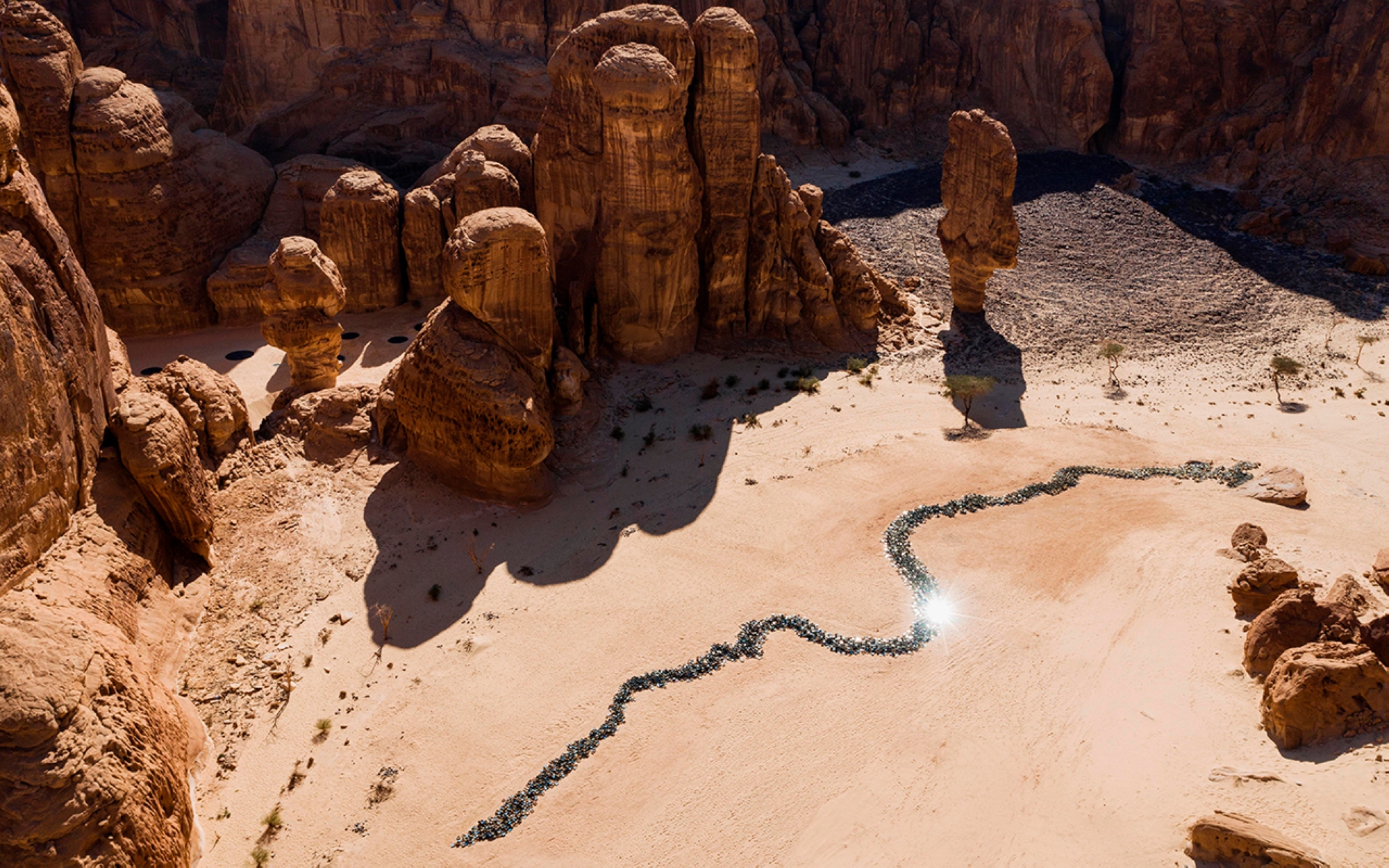
Desert X AlUla Exhibition
Desert X AlUla is an exhibition specializing in nature-mimicking arts held periodically in AlUla. The second edition of the exhibition took place from February 11 to March 30, 2022, and was titled 'Mirage'. Artists drew inspiration from mirages and oases rooted in desert history and culture. Fifteen Saudi and international artists participated, presenting new works that explored dreams, deception, fantasy, disappearance, extraction, and illusion, showing the contrast between the natural world and the man-made. Desert X AlUla 2022 was held in collaboration between Desert X in California and the Royal Commission for AlUla. The program was established to enhance continuous cultural dialogue through art, and it's the first of its kind in the Kingdom that mirrors the nature around it.
Entertainment in AlUla
AlUla Adventure Center
The Adventure Center in AlUla offers recreational experiences and sports activities year-round, such as rock climbing, mountain descents, AlUla's zipline, ascending using AlUla's sky ladder towards a rocky summit amidst the AlUla mountains at a height of forty-five m, and AlUla's giant swing that swings a diameter of seventy m across the valley rocks. Al-Jadidah Cinema is the first outdoor cinema showroom in Saudi Arabia.
AlUla Relaxation and Recreation Festival
AlUla Relaxation and Recreation Festival activities commenced in March 2022, located in AlUla Oasis. This festival is the first of its kind for relaxation and wellness in the Gulf countries. The Five Senses Sanctuary retreat, specially designed for this event amid the ancient Dadan Kingdom mountains, was inaugurated with various wellness and personal development experts present to provide yoga lessons, discussions, meditation sessions, sound therapy, and music. The festival's activities lasted ten days.
AlUla International Airport
Establishment of AlUla Airport
Serving AlUla is the AlUla International Airport, located twenty-five km away from its center. The date October 31, 2011, was a significant event for the governorate, as the first Embraer aircraft landed at the airport runway, arriving from King Khalid International Airport in Riyadh. This marked the actual operation of alAUla's new airport. The airport was constructed using local materials in harmony with the environment and the rich heritage of the governorate. The airport was developed in mid-2020 to accommodate around four hundred thousand passengers annually, covering a total area of 2.4 million m. During the forty-first GCC Summit, the General Authority of Civil Aviation conducted a comprehensive upgrade for the airport, which included constructing an executive hall inspired by AlUla's environment, equipped with modern technologies and requirements, refurbishing the main hall by redesigning it and increasing its capacity, and expanding the airport's taxiing capabilities to become among the top ten airports in Saudi Arabia. Additional aircraft parking areas were built, covering forty-nine m, accommodating fifteen commercial aircraft simultaneously. Aircraft taxiways of 181,000 m were constructed to facilitate movement within the yard, with two more pathways added, connecting the entrance and exit from the runway to a total of three pathways. All aircraft parking spots were equipped with electronic aircraft guidance systems.
Private Aircraft Terminal
On November 7, 2022, the Royal Commission for AlUla inaugurated the Private Aircraft Terminal at AlUla International Airport, which is the first of its kind in Saudi Arabia. At the beginning of its inauguration, the terminal welcomed several private aircraft, contributing to offering a variety of aviation services, thus enhancing AlUla's appeal for business and investments. The terminal was constructed with a modern design in line with clean energy standards, spanning a total area of three thousand m². It's equipped with all ground aviation services and engineering crews, along with offering long-term aircraft parking services. Through this terminal, the Royal Commission for AlUla aims to strengthen communication with various international and local destinations and to position AlUla as a global logistical hub in the northwest of Saudi Arabia.
AlUla Train Project
In July 2022, the Royal Commission for AlUla Governorate announced the contract for the design of the AlUla train with the Cisterra Group, a leader in public transportation. This move aims to achieve comprehensive development in AlUla, enhance sustainable transportation, and reduce road congestion and noise. The train effectively utilizes sustainable electric energy. AlUla train connects centers, neighborhoods, heritage sites, and tourist locations, with its route stretching fifty km. It starts from AlUla International Airport in the south and goes up to the city of Hegra in the north. The train carriages are designed with inspiration from the natural and historical heritage of AlUla.
The train project is divided into several routes. The northern red route connects tourist areas and archaeological sites, facilitating movement between main sites identified in a Journey Through Time plan. The second phase extends to the south of AlUla, with an additional thirty-three km route connecting to the international airport, reinforcing AlUla's position as a prominent transportation hub. AlUla train route is designed to support pedestrian access, shared bicycles, electronic bikes, and electric vehicles.
Related quizzes
Related articles

